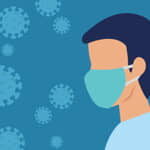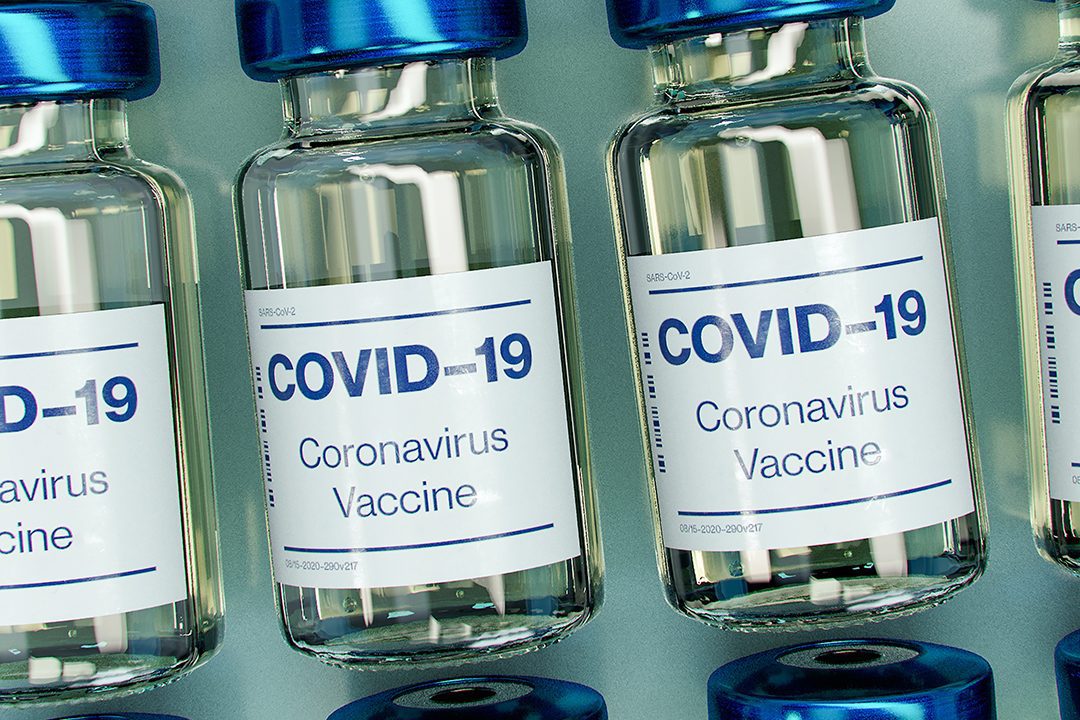COVID-19 Risk Factors – Chronic Lung Conditions

There are certain factors that put particular groups of people at higher risk of experiencing severe disease if infected by SARS CoV-2. Click here for an overview.
The association between non-communicable disorders (NCDs) and more severe COVID-19 symptoms is consistent worldwide; those with underlying NCDs are more vulnerable to experiencing severe complications following infection with SARS CoV-2.
Some of the most prevalent NCDs include type 2 diabetes, hypertension, cardiovascular disease, chronic lung conditions, chronic kidney disease, chronic liver disease, and cancer.
This article covers chronic lung conditions.
What are chronic lung conditions?
Chronic lung conditions include asthma, Chronic Obstructive Pulmonary Disorder (COPD), and cystic fibrosis (CF). These conditions may make individuals more susceptible to respiratory lung infections, such as COVID-19, and they may increase the risk of severe health effects following infection.
Why are the lungs vulnerable to damage?
Having long-term conditions that result in recurrent inflammation in the lungs such as asthma, Chronic Obstructive Pulmonary Disorder (COPD), and cystic fibrosis (CF) make individuals more susceptible to respiratory lung infections. This is due to:
- Damaged lung tissue. The lungs are home to specialised white blood cells which help protect them from inhaled pathogens and toxins under normal circumstances. However, those whose lungs are compromised, either due to persistent inflammation or an abnormal lung epithelium, are more likely to experience immune system exhaustion. Compromisation of the lung tissue and immune system, can have extensive consequences, including making affected individuals more susceptible to infection or challenge.
- Medications. Controlling lung inflammation in individuals with chronic or acute asthma may require the use of immunosuppressive medications such as steroids. These can diminish the immune response and make those taking the medications more vulnerable to infection. Despite this, current advice is to continue taking all prescribed medications, as poorly controlled disease increases the risk of severe consequences following infection with SARS CoV-2.
Cystic Fibrosis
Individuals with CF have a genetic dysfunction that affects the level of salt in cells. An excess of salt leads to a cellular water imbalance which can clog up highly vascular organs such as the lungs and digestive tract. The net effect of this on the lungs is a disruption of airflow in and out of the lungs, increased susceptibility to respiratory distress and a high risk of developing additional lung complications. As COVID-19 is predominantly a respiratory disease, not having the necessary protection mechanisms in place within the lungs puts individuals at a higher risk of developing severe respiratory disease if infected with SARS CoV-2.
Chronic Obstructive Pulmonary Disorder
The percentage of patients who have COVID-19 and COPD is not as high as the percentage who have other comorbidities (such as hypertension and cardiovascular disease); perhaps because many patients with chronic lung conditions are taking the necessary avoidance steps to minimise the risk of infection. However, those individuals who have COPD and are diagnosed with COVID-19 are at increased risk of experiencing severe symptoms. Research is ongoing to establish why this is, but one explanation is that those with COPD have more ACE2 receptors. The ACE2 receptor is the enzyme that SARS CoV-2 uses to enter the cells of the body and, therefore, increased expression of ACE2 could contribute to increased viral entry. Further work on the association between ACE2 expression and COVID-19 disease severity and prognosis is required.
Pulmonary fibrosis
This is also known as interstitial lung disease. Those with it are at increased risk of severe disease. However, pulmonary fibrosis can also be a lasting marker of SARS CoV-2 infection, particularly for those patients who experienced severe symptoms, such as chronic inflammation and acute respiratory distress. Residual pulmonary fibrosis may well become a substantial burden for those who have recovered from COVID-19.
Asthma
Whilst respiratory viruses in general are a common trigger for asthma exacerbations, not all asthmatic patients are equally susceptible. There is no clear evidence that those with asthma are at higher risk of infection with SARS CoV-2, however the Centers for Disease Control and Prevention (CDC) does consider those with moderate-severe asthma at greater risk of more serious disease following infection. Those with asthma are encouraged to do all they can to keep their disease under control, so that they minimise the possibility of having to visit a healthcare facility at this time. This includes limiting exposure to other known asthma attack triggers, such as allergens and other viruses, to improve the overall health status of the lungs.
I have a chronic lung condition, what should I do?
As COVID-19 is a viral respiratory infection, it should come as no surprise that having a pre-existing lung condition puts you at increased risk of complications should you become infected with SARS CoV-2. The best approach to adopt if you fall into this high risk category is to minimise the chances of exposure. Maintain stringent social distancing whilst the virus is at its peak, continue taking any medications and ensure your overall health is as good as possible. If you are a smoker, it is highly recommended you stop smoking to give your lungs a better chance to control and recover from the infection.
COVID-19 Risk Factors – Underlying Health Conditions: Cardiovascular disease
COVID-19 Risk Factors – Underlying Health Conditions: Cancer
Sources:
- “COVID-19: What You Should Know.” Respiratory Health Association, 26 May 2020, resphealth.org/covid-19-what-you-should-know/.
- “COVID-19 and Asthma: What Patients Need to Know: AAAAI.” The American Academy of Allergy, Asthma & Immunology, www.aaaai.org/conditions-and-treatments/library/asthma-library/covid-asthma.
- Deslée, G., et al. “Chronic Obstructive Pulmonary Disease and the COVID-19 Pandemic: Reciprocal Challenges.” Respiratory Medicine and Research, vol. 78, 2020, p. 100764., doi:10.1016/j.resmer.2020.100764.
- Morais-Almeida, Mário, et al. “COVID-19, Asthma, and Biological Therapies: What We Need to Know.” World Allergy Organization Journal, vol. 13, no. 5, 2020, p. 100126., doi:10.1016/j.waojou.2020.100126.
- “People Who Are at Higher Risk for Severe Illness.” Centers for Disease Control and Prevention, Centers for Disease Control and Prevention, 14 May 2020.
- Spagnolo, Paolo, et al. “Pulmonary Fibrosis Secondary to COVID-19: a Call to Arms?” The Lancet Respiratory Medicine, S2213-2600(20)30222-8, 15 May 2020, doi:10.1016/s2213-2600(20)30222-8.










































